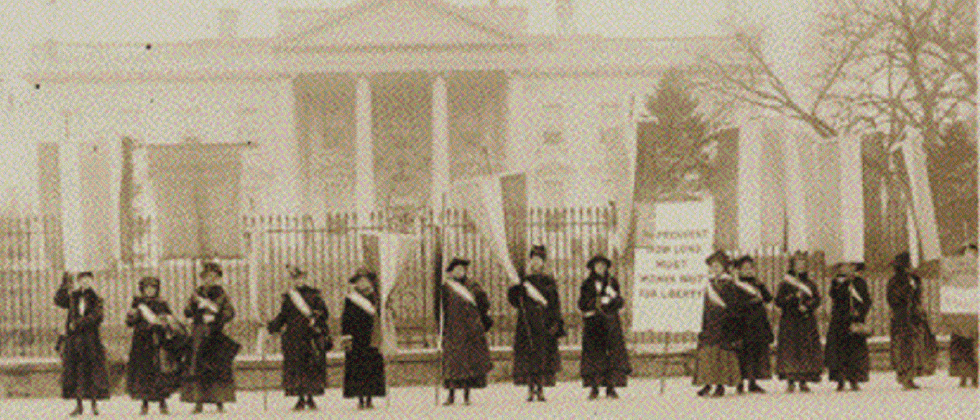History
"A nation which does not know what it was yesterday, does not know what it is today, nor what it is trying to do." —Woodrow Wilson
Most Shasta students take history courses because the classes fulfill basic requirements for completing an associate degree or for transferring to another institution. Those requirements are in place because many believe, as Woodrow Wilson had, the past informs the present. Yet history is important not only because it makes us better world citizens but also because it provides an understanding of human interaction that makes us better people.

History is both a process and a product. People create history through their day to day actions while historians create history by researching and recording those events. The picture above is historic because it captured a moment in time when suffragettes picketed the White House demanding the right to vote, while the quote above is historic for it captured the thoughts of historian Woodrow Wilson.
Historians make sense out of the past by researching primary and secondary sources in order to create a more vivid story of the past. For example, a fuller understanding of both the picture and quote can be reached by placing each in its historical context. The picture was taken in front of the White House in 1917--three years prior to the passing of the 19th Amendment that granted women the right to vote.
The suffragettes addressed their protest to President Woodrow Wilson, who in 1917 asked Congress for a declaration of war. The sign, which read "Mr. President, how long must women wait for liberty," suggested that the suffragettes followed Wilson's comments on history and knew America's long and complex history of voting rights and how to apply political pressure in the present in order to achieve their goal of suffrage.
In order to receive suffragists' wartime support, President Wilson agreed to support the 19th Amendment. Knowing who Woodrow Wilson was--a historian, president of Princeton University, governor of New Jersey, and President of the U.S.--gives more credence to his statements.
Understanding the stories behind the picture and quote is historical knowledge, which allows us to better protect and expand those rights now and in the future.
For a list of history courses at Shasta College: Search Course Offerings
For more on history, go here:
For what to do with a history degree, go here: http://www.historians.org/pubs/Free/careers/Index.htm
To look at history departments of four-year institutions, go here:
- http://history.ucdavis.edu/
- http://www.csuchico.edu/hist/
- http://www.csus.edu/Hist/
- http://www.humboldt.edu/~hist/
- http://www.sou.edu/history/
The following is a comprehensive database of scholarships for anyone interested in pursuing a degree in history. The directory filters scholarships by a variety of characteristics, ensuring students find ones for which they are eligible. The link to this database is here: http://www.accreditedonlinecolleges.org/history/
For more information, contact the ACSS Division.
History
Develop skills and knowledge consistent with the study of history in a global, multicultural and comparative context.